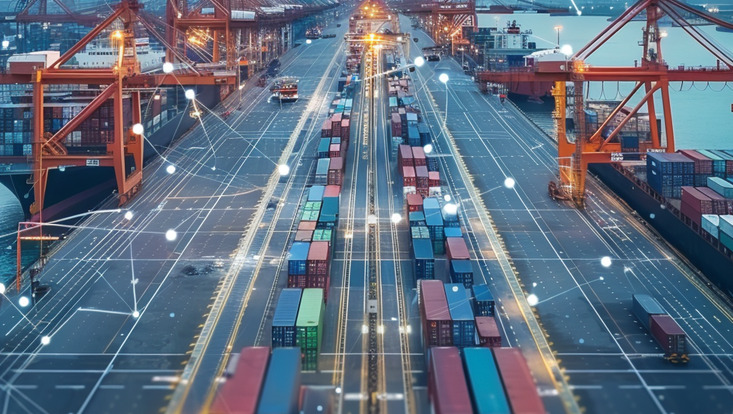Building a Digital Twin of an Inland Port: A Sensor Fusion-based Approach for Automated Container TradingBachelor Thesis
7 June 2024, by Oskar Munz

Photo: midjourney
Despite their importance in logistics, inland ports often lack advanced digital solutions, for example for tracking container and trailer movements. This thesis investigates a sensor-fusion based approach for improving the automation of container and trailer tracking in inland ports with a specific focus on the Alberthafen in Dresden. This thesis focuses on the evaluation of using multiple sensors attached to a reachstacker, the primary machines responsible for moving containers and trailers in inland ports. The system integrates two GPS sensors to track the position of the reachstackers arm, as well as a distance sensor to monitor if the reachstacker is currently carrying a container or trailer. Additionally an acceleration sensor is used to track the precise arm movement. Initial findings suggest that the combination of these sensors can provide sufficient data, and while the acceleration sensor may not be needed at all, some challenges with GPS precision remain. The real time information provided by these sensors can then inform another process to look for a container ID in a video feed, provided by a camera that is also attached to the reachstacker. Potential improvements using standard data processing techniques are explored to address these issues. The findings support the proof of concept that automated container tracking using these sensors can enhance the efficiency and accuracy of port operations, reducing the need for manual intervention. This sensor-based tracking system offers promising potential for improving the digitization of inland port logistics.
Supervised by:
Prof. Dr. Janick Edinger, Helen Schloh
